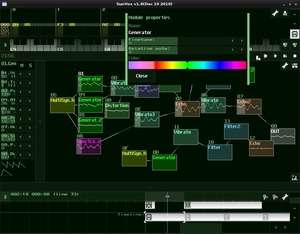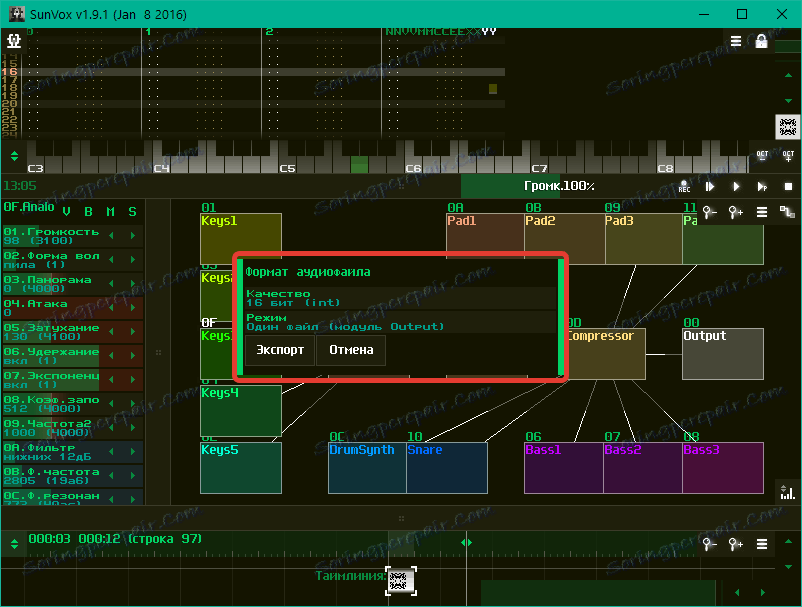

They have the same effect, it's just that the measurement is different (Example: 50% vs 2:1 ratio) In SunVox it is measured by a percentage, but in other DAWs it is called "Ratio". This controls the amount the compressor reduces the volume when activated (the threshold is the point where the compressor is activated). This has been copied over and revised from this post: Raspberry Pi: SunVox in Linux Console (No Xorg) (by Marky Shaw).Beautiful instruments made of the basic SunVox modules.
#Sunvox sampler how to#
How to make a beautiful synthetic choir.MultiSynth: changing the musical scale (5-TET, 7-TET, etc.) (pitch curve3).MultiSynth: dynamic scale (pitch curve3).MultiSynth: playing several generators simultaneously.Acid bass: MultiSynth + two oscillators + filter.Sampler: Input Module and Sampler Recording (by SolarLune).effect 07 - sample offset (sample slicing) Sampler: How to keep the length on different notes.Sampler: Retriggering / Scaling (by SolarLune).Sampler: Using the Sampler to play back a drum loop, and time-stretch it (by SolarLune).Kicker, Compressor, and Ducking (by SolarLune).Six different ways to automate controllers.Controllers: adjusting the levels graphically.Pattern Editor: Changing the filter's controller (cut-off frequency) from the pattern.Pattern Editor: Tempo automation (shuffle).Pattern Editor: Arpeggio Effect (by SolarLune).

Pattern Editor: Standard Effects (by SolarLune).Pattern Editor: Multiple Effects per Track.Pattern Editor: How to Apply the Envelope.Creating your first song (by bcacciaaudio).Making Music with SunVox Tutorials by Daedalus Young:



 0 kommentar(er)
0 kommentar(er)
